The tomb of Minh Mang is located in Huong Tho Commune, Huong Tra District, on the west bank of the Perfume River, about 12 km south of Hue city center. It is one of the five imperial tombs we’ve previously mentioned.
Now that we’ve located it, let’s tell you that the tomb we’ll be discussing today is famous for its architecture and its beautiful forest setting, which makes a visit more of a leisurely than a cultural experience. Around 18 hectares of land, you can stroll among gardens and statues or cross a large bridge over a lake filled with lotus flowers that delight anyone’s eyes.
Minh Mang (1791–1841), born Nguyễn Phúc Đảm, was the second emperor of the Nguyễn dynasty of Vietnam. He was the fourth son of Emperor Gia Long, whose eldest son, Nguyễn Phúc Cảnh, had died in 1801. Minh Mang was well known for his staunch opposition to French rule in Vietnam and his strict adherence to Confucian principles.
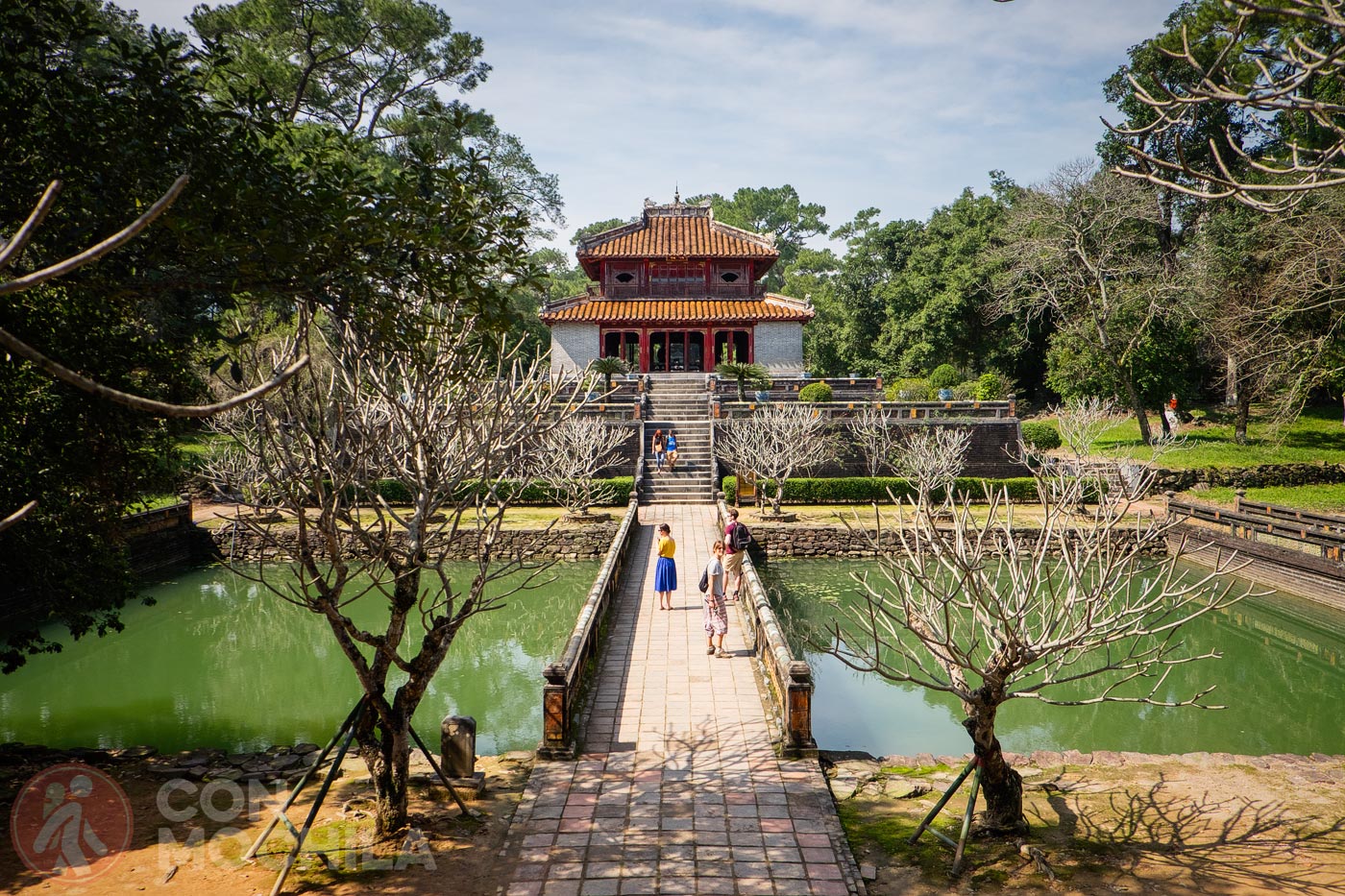
The tomb of Minh Mang was designed by the emperor himself, but after his death, it was his son, Thieu Tri, who carried out its construction according to his father’s plan. The work was completed in 1843.
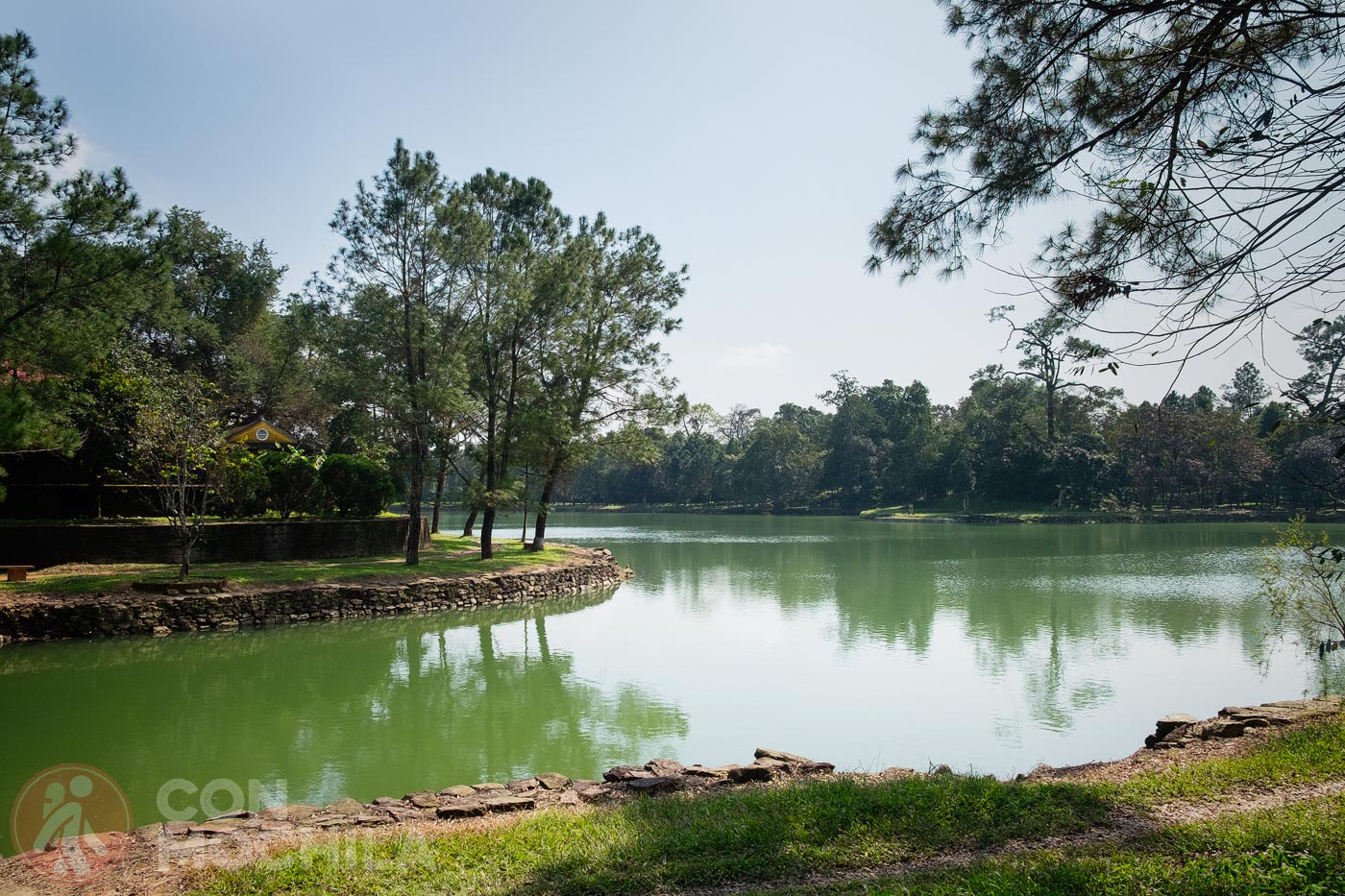
After the emperor’s death, a group of guards was assigned to watch over his tomb and maintain the gardens. However, this upkeep ceased after the country was divided and the monarchy was abolished. Additionally, Hue suffered extensive damage during the Tet Offensive of 1968, in the Vietnam War.
By the 1990s, only 20 of the original 40 structures remained standing, and those that survived were in urgent need of restoration.
The Minh Mang tomb complex consists of 40 structures, including the emperor’s dressing room, mourning pavilions, and the tomb itself. The vibrant colors, intricate ornamentation, and lacquered finishes of the buildings add to the site’s grandeur and beauty. Like most royal tombs in the region, the site is enclosed by a protective wall.
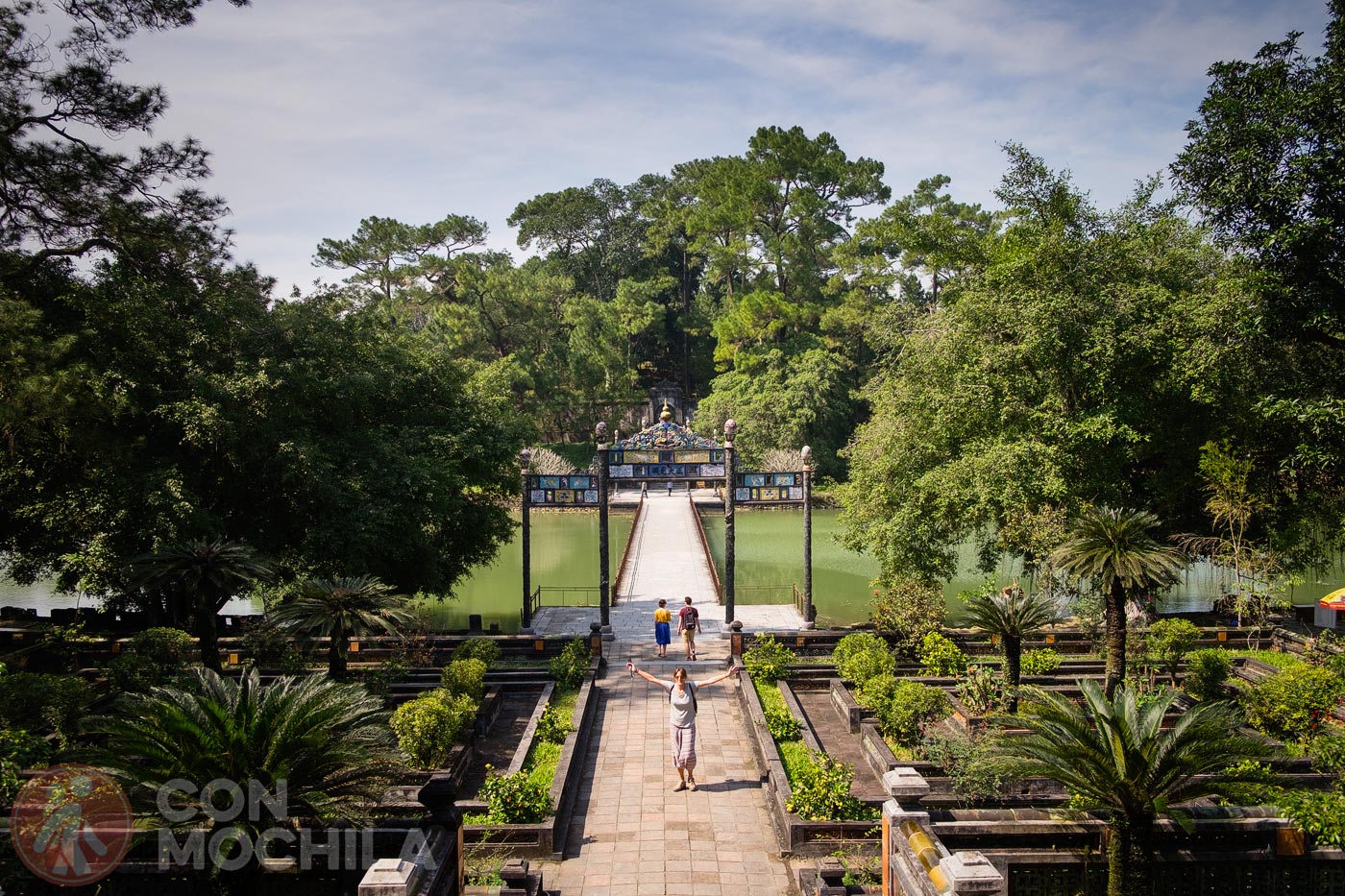
The tomb’s layout follows a perfectly symmetrical axis, known as the Than Dao Path, which connects all major structures. This pathway extends from the Great Red Gate to the wall behind the King’s tomb.
In addition to the central gate, there are two side gates: the Left Red Gate and the Right Red Gate, which lead to the Court of Honor, where stone statues of elephants, mandarins, and horses stand in two orderly rows.
Beyond the three gates, on Phung Than Mount, lies the Pavilion of Steles, which houses the Thanh Duc Than Cong stele, inscribed with the biography of Emperor Minh Mang, written by his son.
The Hien Duc Gate leads to Sung An Temple, where King Minh Mang and his wife are venerated. Three stone bridges cross to the other side of the temple, with the marble bridge reserved exclusively for the king.
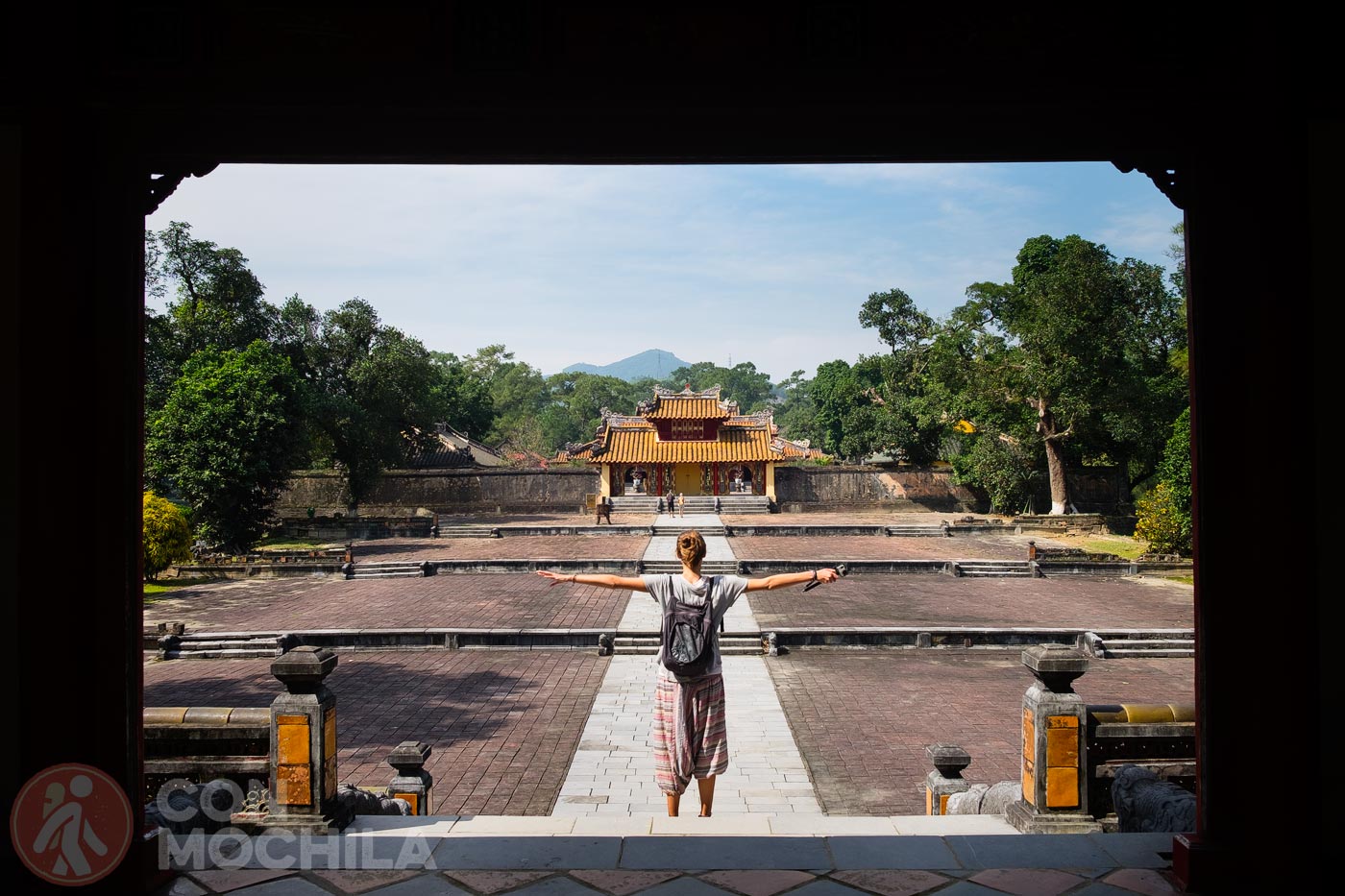
Finally, the Hoang Trach Gate opens to the Minh Lau Pavilion, which sits atop three terraces representing heaven, earth, and water. Closer to the tomb itself, you will find New Moon Lake (Ho Tan Nguyet), shaped like a crescent moon, encircling the circular wall of the tomb (Buu Thanh).
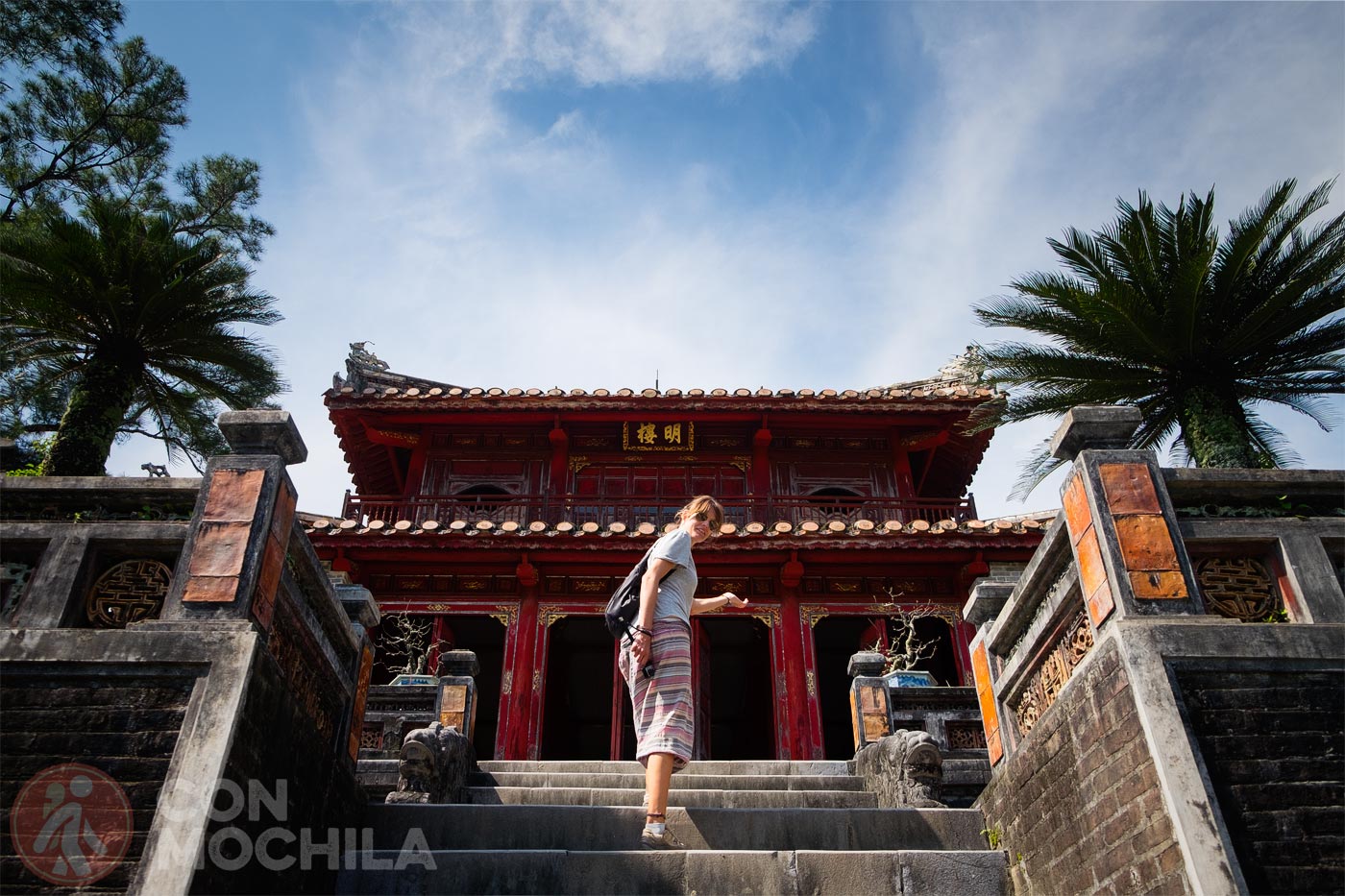
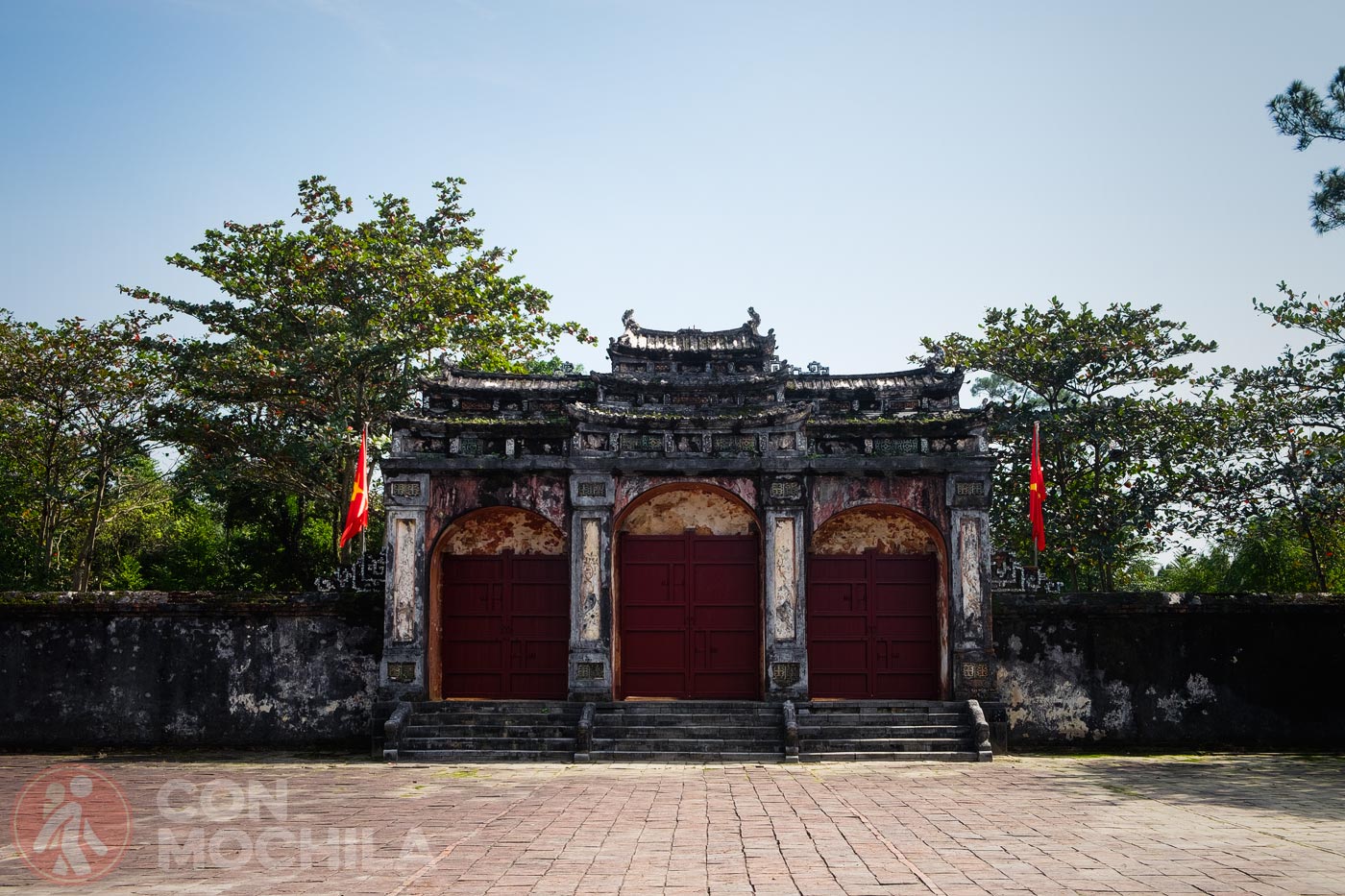
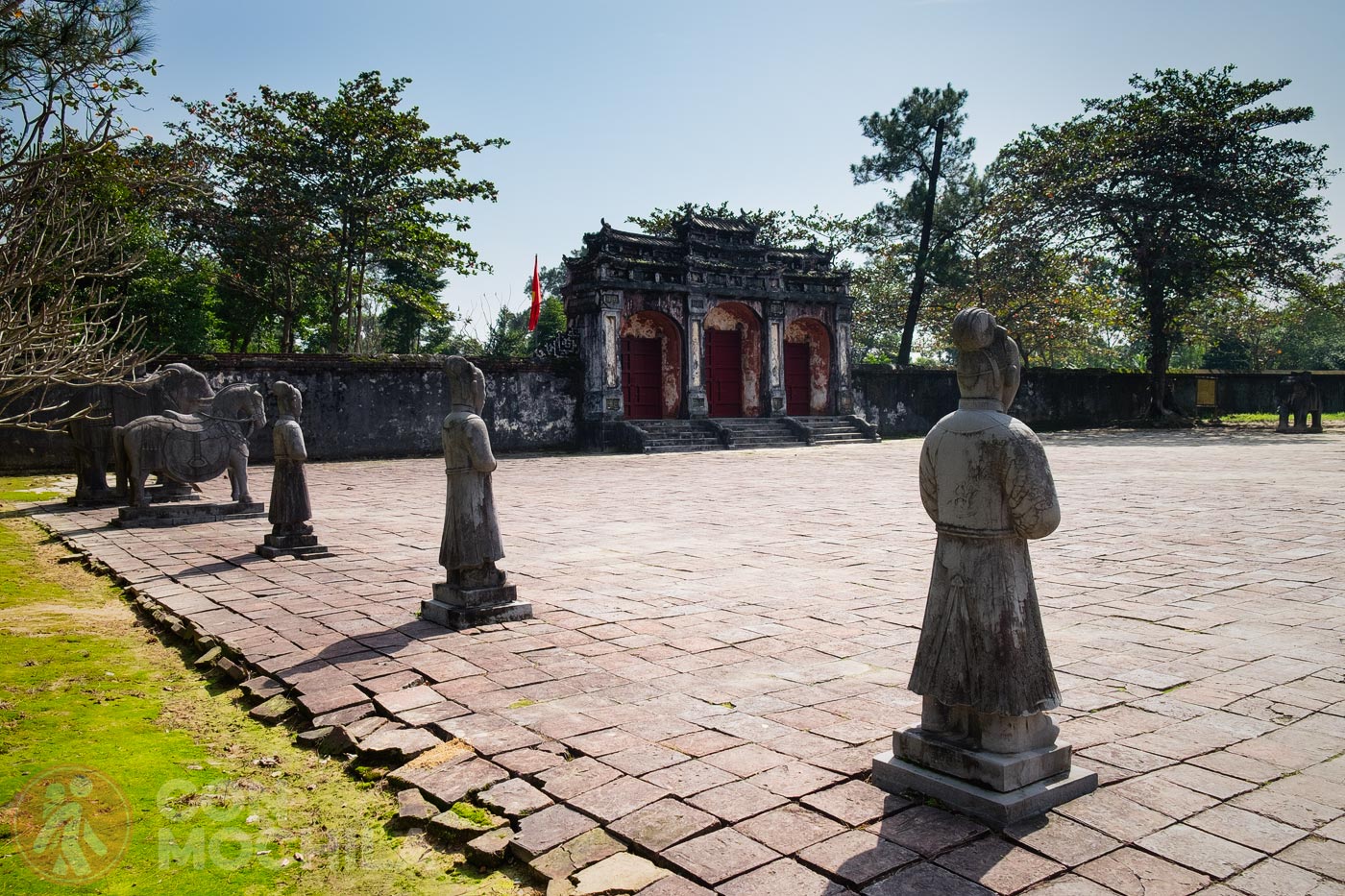
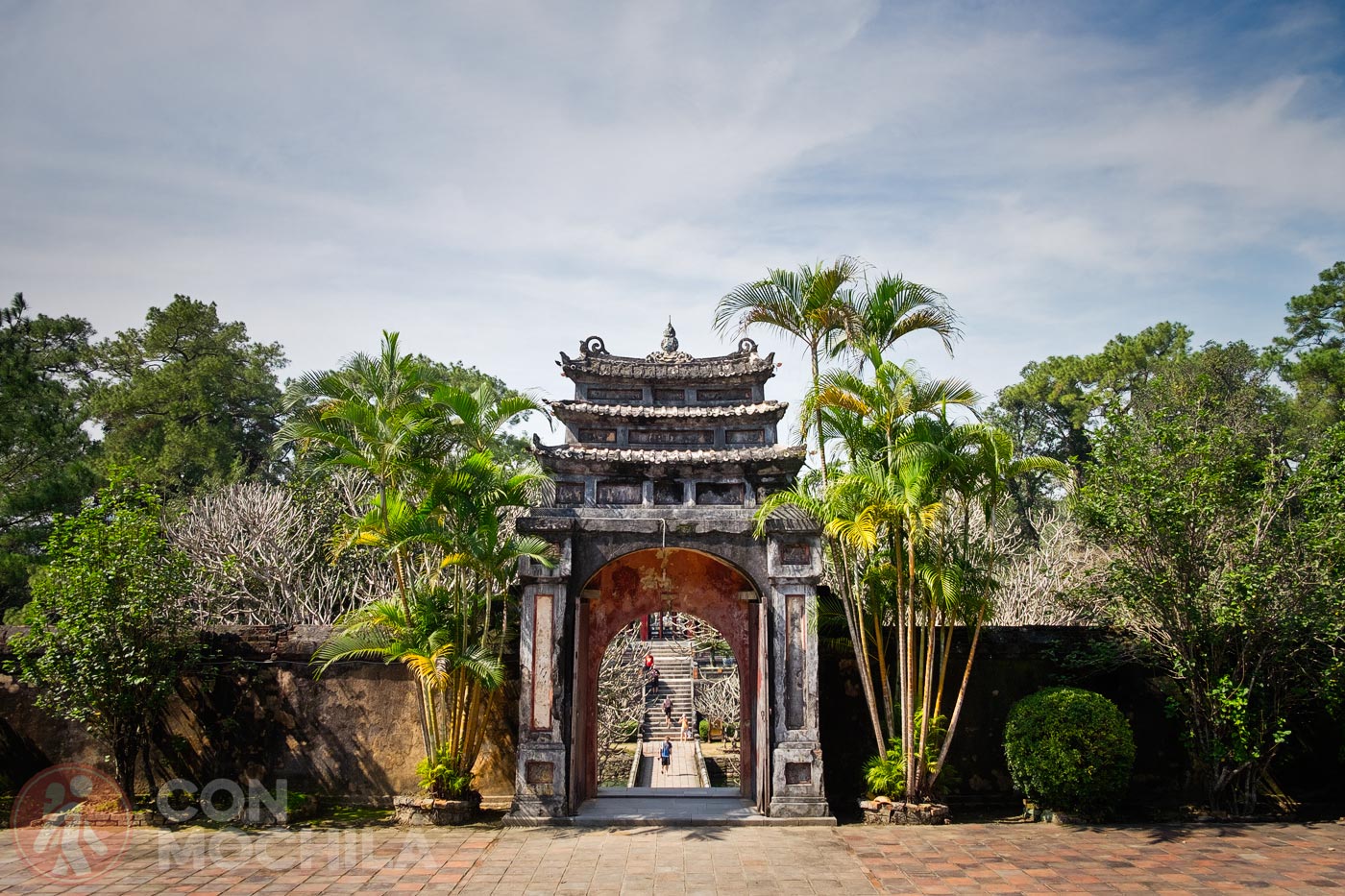
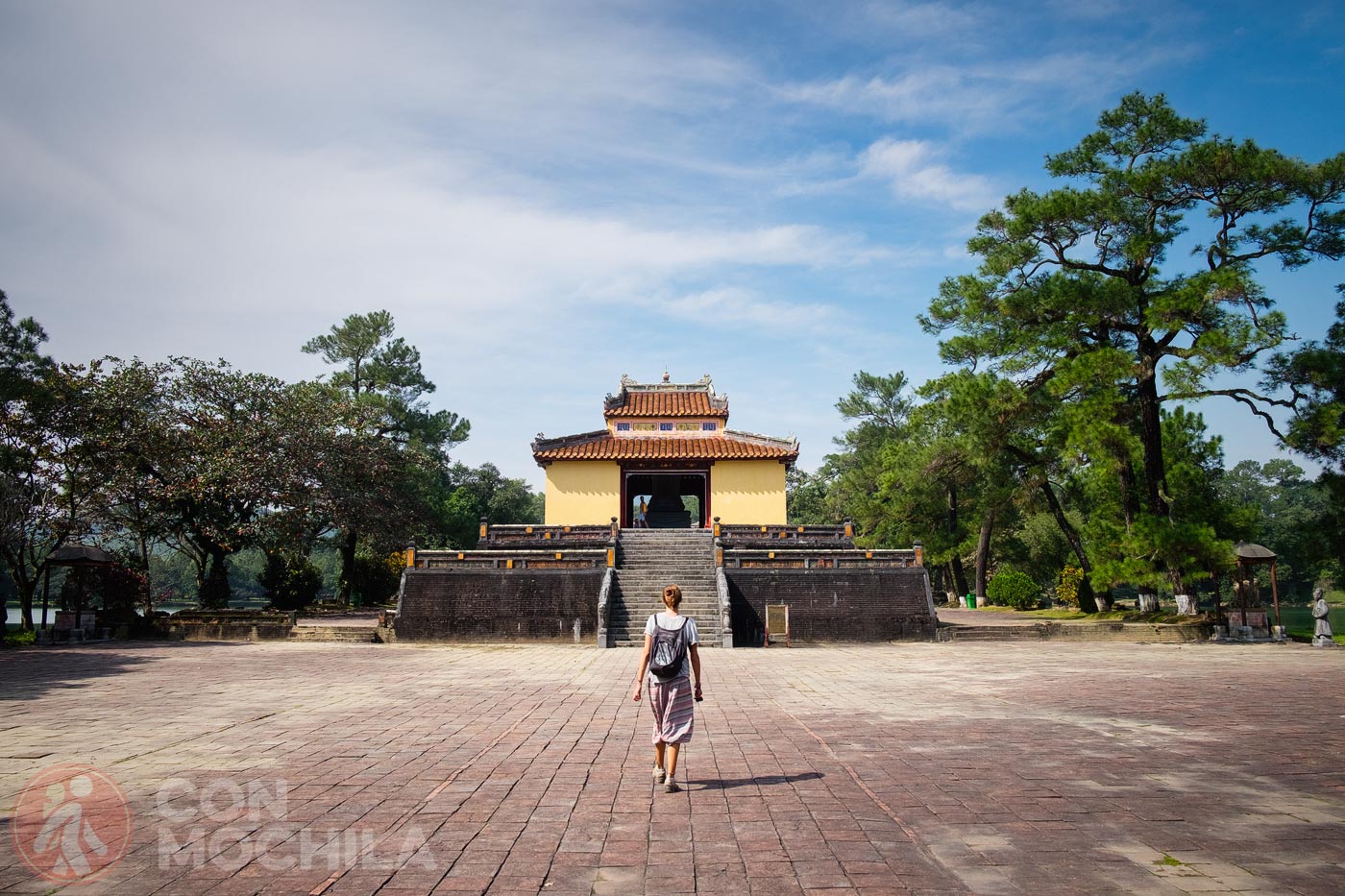
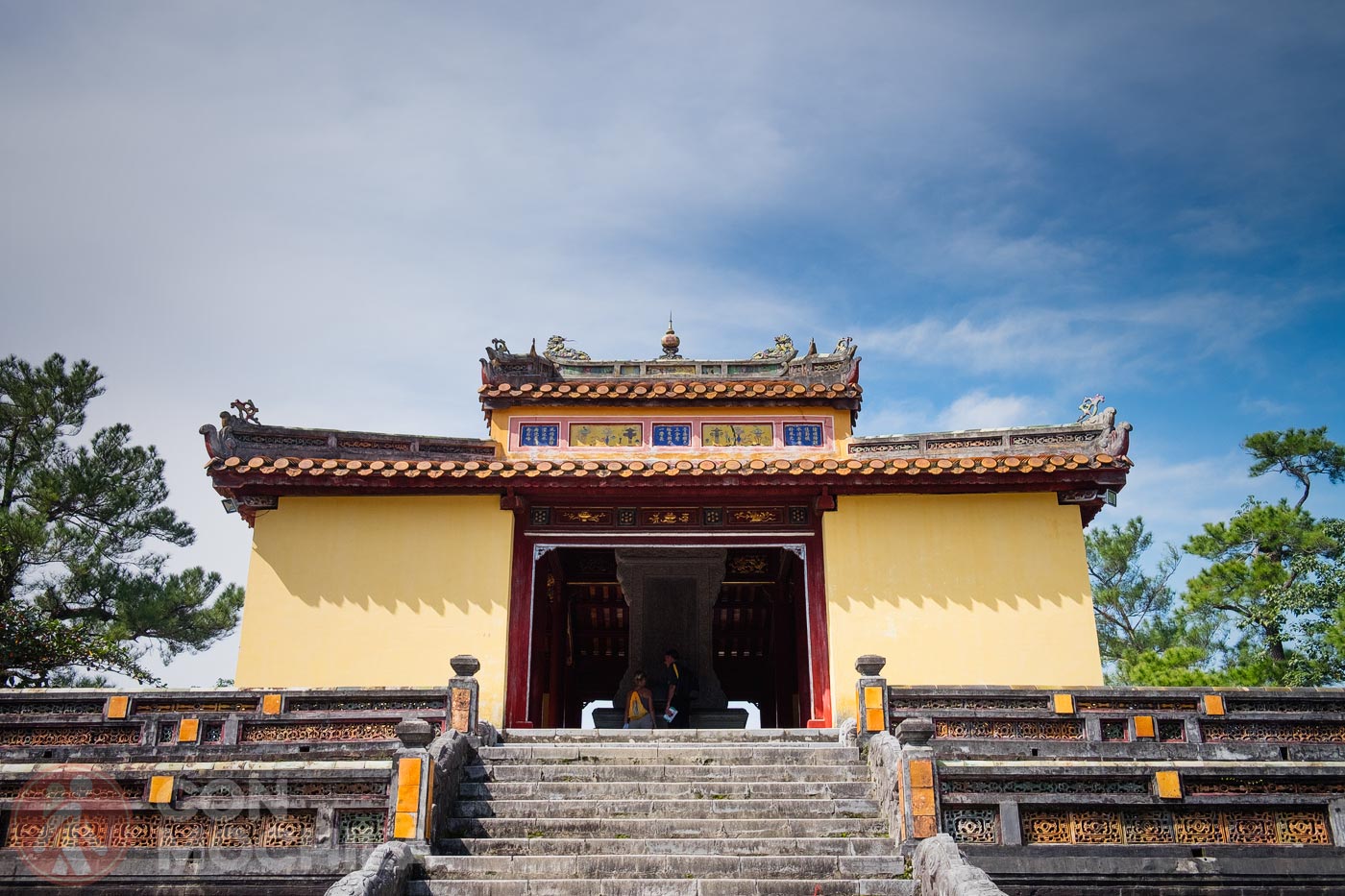
From a distance, the complex of Minh Mang Tomb resembles the figure of a man, with the hill as a pillow and his hands and feet extending toward the river. The distance from the main entrance gate to the back gate is nearly 700 meters. While the surrounding fence is high, it does not obstruct the view of the nearby mountains.
A stone bridge spans across the crescent-shaped Tan Nguyet Lake (New Moon Lake), leading to a grand staircase adorned with dragon railings that ascends to Minh Mang tomb. The tomb’s gate is only opened once a year, on the anniversary of the emperor’s death.
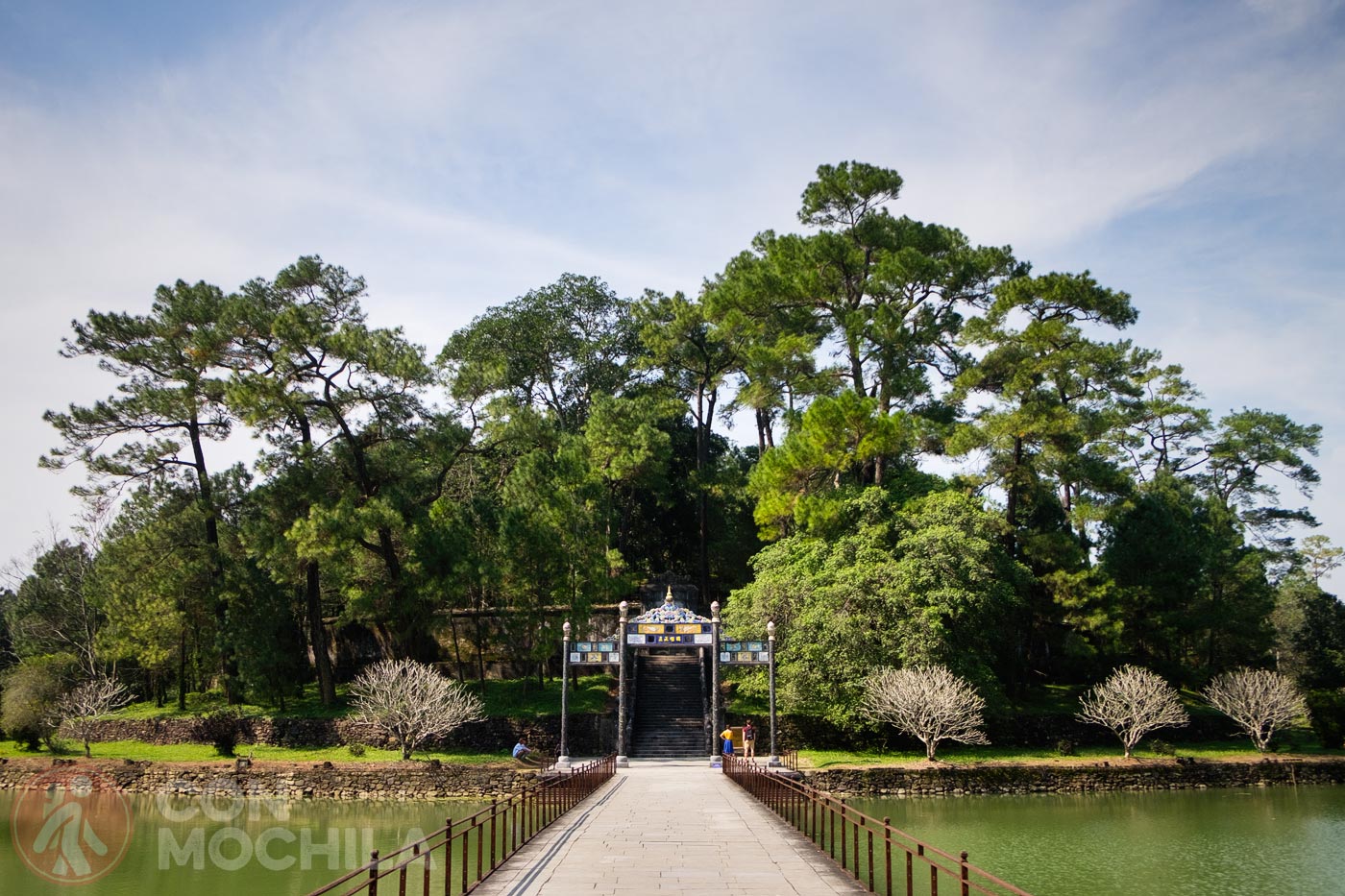
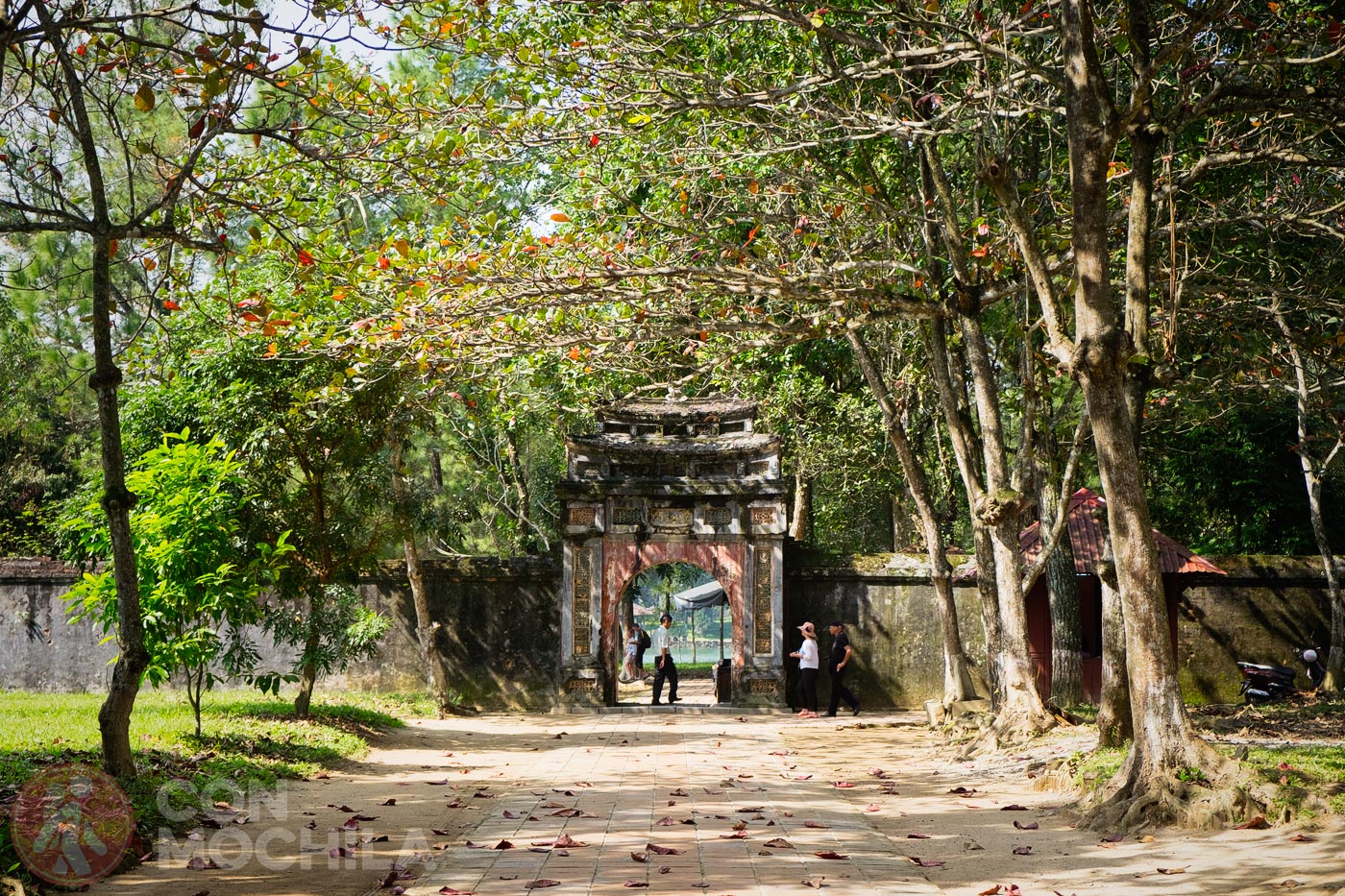
If you plan to explore the imperial tombs of Hue, you can either rent a motorbike and visit them on your own or book a guided Hue tour visiting the best preserved tombs, which includes the tombs along with other iconic landmarks in the city. The choice is yours!
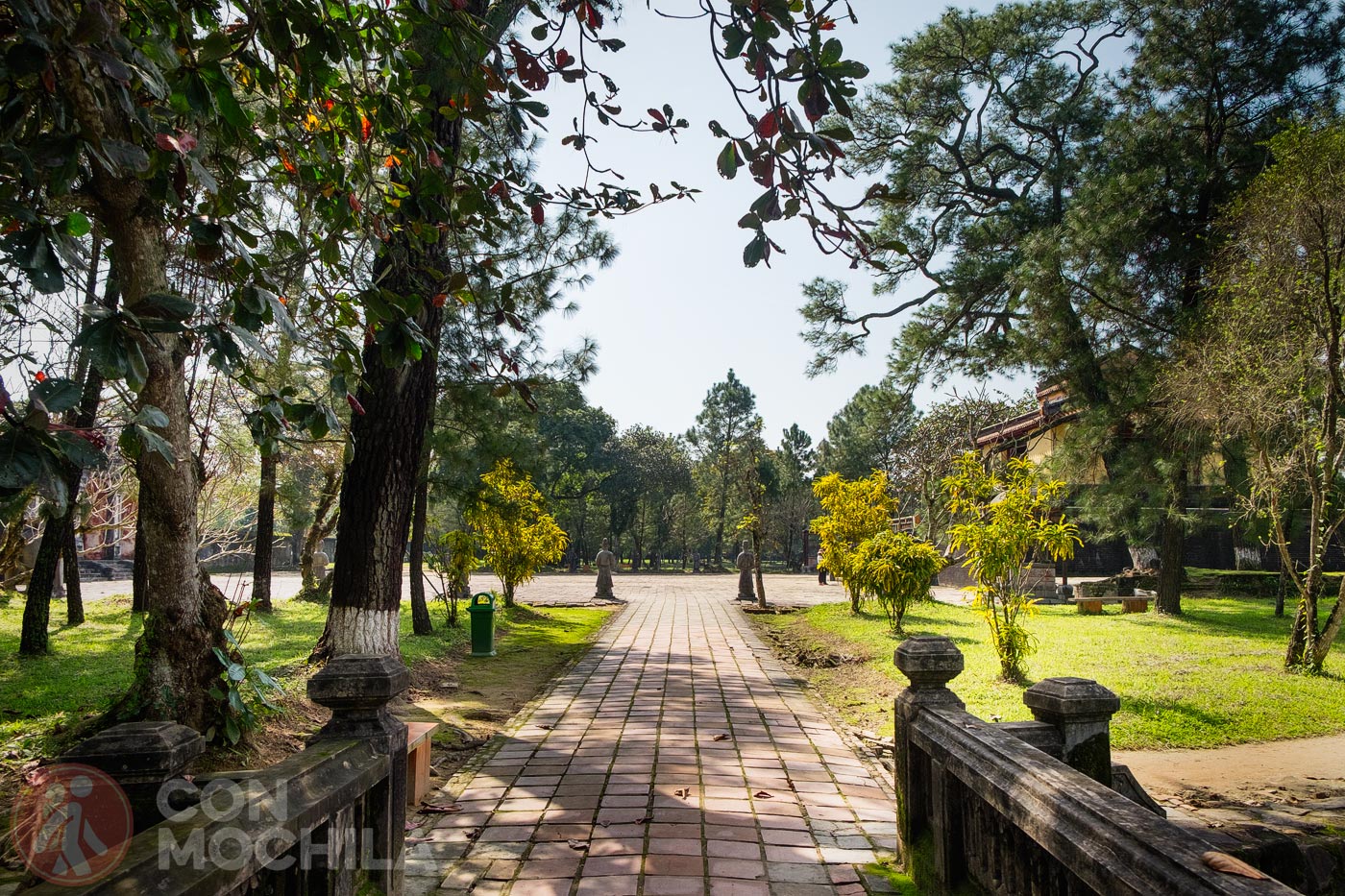
If you’re planning to visit Minh Mang’s tomb by motorbike or any other vehicle, we strongly recommend obtaining an international driving permit to avoid any issues with local authorities.